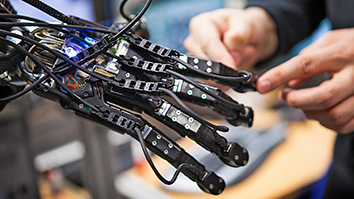Citation
Doppalapudi, R. S., Riccio, E. S., Davis, Z., Menda, S., Wang, A., Du, N., … & Kapetanovic, I. M. (2012). Genotoxicity of the cancer chemopreventive drug candidates CP-31398, SHetA2, and phospho-ibuprofen. Mutation Research/Genetic Toxicology and Environmental Mutagenesis, 746(1), 78-88.
Abstract
The genotoxic activities of three cancer chemopreventive drug candidates, CP-31398 (a cell permeable styrylquinazoline p53 modulator), SHetA2 (a flexible heteroarotinoid), and phospho-ibuprofen (PI, a derivative of ibuprofen) were tested. None of the compounds were mutagenic in the Salmonella/Escherichia coli/microsome plate incorporation test. CP-31398 and SHetA2 did not induce chromosomal aberrations (CA) in Chinese hamster ovary (CHO) cells, either in the presence or absence of rat hepatic S9 (S9). PI induced CA in CHO cells, but only in the presence of S9. PI, its parent compound ibuprofen, and its moiety diethoxyphosphoryloxybutyl alcohol (DEPBA) were tested for CA and micronuclei (MN) in CHO cells in the presence of S9. PI induced CA as well as MN, both kinetochore-positive (Kin+) and -negative (Kin−), in the presence of S9 at ≤100 μg/ml. Ibuprofen was negative for CA, positive for MN with Kin+ at 250 μg/ml, and positive for MN with Kin− at 125 and 250 μg/ml. DEPBA induced neither CA nor MN at ≤5000 μg/ml. The induction of chromosomal damage in PI-treated CHO cells in the presence of S9 may be due to its metabolites. None of the compounds were genotoxic, in the presence or absence of S9, in the GADD45α-GFP Human GreenScreen assay and none induced MN in mouse bone marrow erythrocytes.
Highlights
► CP31398, SHetA2 and PI were negative in the Ames test and in the mouse bone marrow micronucleus test.
► CP31398 and SHetA2 were negative for chromosomal aberrations (CA) in CHO cells.
► PI was negative in the absence of S9 and positive in the presence of S9 for CA in CHO cells.
► Induction of CA with PI in the presence of S9 may be due to the metabolites generated in cultures.
► All 3 compounds may be potential chemopreventive agents for further development.


